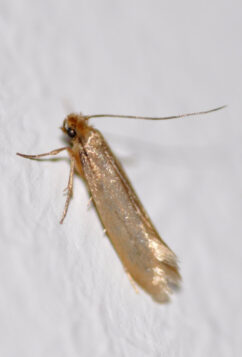Saving raw materials
and oceans


The global textile industry’s appetite for raw materials is enormous. By reusing and recycling, we can make a difference. Let’s look at how we deal with synthetic fibers in our products.
Living a fair, sustainable life sometimes sounds a bit tedious from time to time, especially when the media proclaim a lofty goal like currently a plastic-free month. Where do we stand at Le Picot with plastic or synthetic fibers? – Basically, we avoid synthetic fabrics whenever possible, except for outer protective layers like in the San Salvatore Jacket. But we also use synthetic fibers in other ways.
So no plastic-free July? Let’s look at this in detail:
When making socks, elastic fibers in the fabric provide a consistent fit, the desired compression, and keep the socks in shape over a more extended period. Elastic fibers optimize the fit of pants too. They also keep cotton fabrics like denim longer in shape. In other words, added synthetic fibers improve the wearing comfort and durability of these garments. The longer a garment you use, the better its eco-balance. The balance is even better if these synthetic fibers are made from recycled raw materials. This means that no further crude oil is needed for their production. After all, crude oil is a limited raw material.
That’s why the nylon fibers in our sports socks, the Marzili, are made from recycled waste material. The same goes for the elastic fibers woven into the fabric of our Rivera jeans: The textile factory uses threads that Repreve, a pioneer in recycling, makes from plastic bottles. These were collected in or near the seashore. Repreve claims to have recycled more than 25 billion plastic bottles at the time of writing this article. So when you wear our Rivera jeans, you’re also contributing to oceans without plastic.
We only use synthetic fibers in our products when they make a functional contribution, extend product life, and have an excellent circular balance.

Wouldn’t it be more consistent not to use synthetic fibers at all?
We are aware that plastics are a far more complex issue, as abrasion and degradation occur with most plastics. And that leads to the infamous microplastic. Nevertheless, we are convinced that we can keep our clothes in circulation longer with the targeted use of synthetic fibers. This is especially true when the clothes are recycled at the end of their life cycle.
At this stage, we see a positive development that makes life easier for all of us: on the one hand, biodegradable plastic fibers are increasingly coming onto the market. We will use these where we can. On the other hand, new technologies are coming onto the market that can separate mixed fibers for recycling.
Until then, we will only use plastic fibers if they have a clear advantage over other materials, fulfill a unique function, and have an optimal eco-balance. Ultimately, it all boils down to our slogan: Make Sense!
And you? To make your contribution not only in plastic-free July, you can try to avoid plastic products, especially single-use plastic items, not leave plastics in the wild, but put them in the trash for recycling whenever possible. And if it has to be plastic anyway, inform yourself if there are products made of recycled plastic.
Until a life entirely without plastic becomes possible, we should be mindful of our plastic consumption every day and not only in plastic-free July.
– Pius
Images: Naja Bertolt Jensen, Markus Spiske, Jilbert Ebrahimi via unsplash.com.

